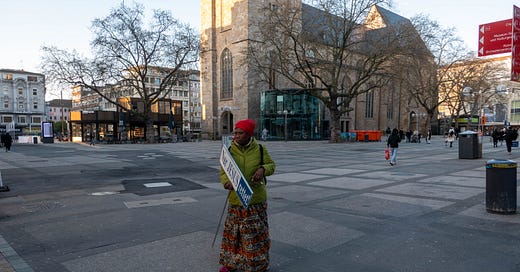Walking the Ruhr Valley: From Dortmund to Duisburg
Modern ancient cities, industry, and a changing of the faith
The Ruhr valley is basically one extensive and thin city stretching for fifty miles. An urban landscape of dorm-like apartment complexes, row homes, industry, rebuilt cathedrals, and ringed centers holding modern brutal edifices, pedestrian malls, and the physically and emotionally intoxicated.
Viewed as a single city, it’s Germany’s largest, and if you walk the length of it, seeing it that way makes sense. For four days, from Dortmund to Duisberg, I never lacked a sidewalk, was almost never in farmland, forest, or an open field, and was always a stone’s throw away from a tram that could rumble me back to where I had come from, or off to where I was headed.
When I asked European friends what’s the “Rust Belt” of Germany, the answer was the Ruhr valley, and it fits. At least when considering economics and class. It also consequently comes with the same stigma. On the train from Frankfurt airport my table mate, a well educated woman of the left, laughed when I said I was headed to Dortmund, adding, ‘You must be going on business, nobody goes there unless they have to.’
The great thing about someone who’s adequate but not proficient in English is their views are unfiltered. She continued to explain that I should stay away from the town center, which was dangerous because it has lots of new immigrants and drug addicts. She got off in Cologne, where she worked as a trade union representative.




